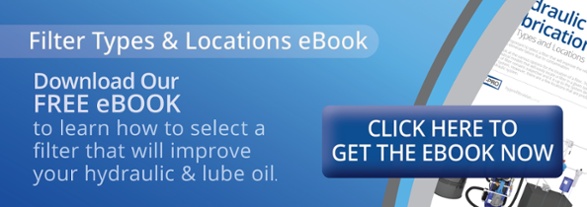 If controlling phosphate ester seems about as elusive as lassoing a bucking bronco, then you've come to the right place. Put on your cowboy hat and let's talk about real solutions to getting it under control.
If controlling phosphate ester seems about as elusive as lassoing a bucking bronco, then you've come to the right place. Put on your cowboy hat and let's talk about real solutions to getting it under control.
When it comes to phosphate ester, you have to plan your method of attack by coming at it from four main areas: water, dirt, acid and thermal events. Let's take a look at how you can lasso each.
Water and Phosphate Ester
Although it may not seem like it, water is a contaminant in non-water based oils. After all, if too much gets into your system, it's going to change the viscosity, cause oxidation, and in the case of phosphate ester, create acid as well. When it comes to bringing phosphate ester under control, the amount of acid that's being generated is an indication of the amount of water contamination in the system. A certain level of water in the system
Regarding water control in EHC systems, we recommend a TMR® N2 head space dryer that's designed specifically for phosphate ester. It separates nitrogen from the rest of the contents of air, then directs nitrogen across the top of the oil level. The difference in water content in the oil versus water content in the air causes the oil to release water to reach equilibrium with the air.
The extremely dry air carries the water out through air exhaust. We recommend exhaust through a desiccant breather for two reasons. First, a visual confirmation the TMR® N2 is providing dry air purge and, second, it ensures there is adequate dirt and water filtration in the event the TMR® N2 is taken offline for normal maintenance. The preferred water content range in phosphate ester is 200-500 ppm.
Dirt and Phosphate Ester
It's likely no surprise that dirt, or hard particle contamination, is unwelcome in your oil. When it gets into your system, it can cause some major damage. Clearance size particles will get jammed in components, scoring the internal surfaces and becoming work hardened in the process, leading to more damage. This will lead to less efficient component function and eventual component failure.
For dirt removal, use high-efficiency filtration (βx(c)=1000). Hy-Pro, as well as EPRI, recommends 1μ high-efficiency filtration in the acid
Phosphoric Acid Production
Phosphoric acid is produced when water chemically reacts with phosphate ester hydraulic oil. A certain level of acid is always going to be present in the oil. Phosphate ester typically has an upper limit of .1 - .2 AN. Once the acid number reaches a certain level, it becomes autocatalytic, resulting in rapid acid production. This acid must be maintained below the upper limit established by the lubricant manufacturer.
To remove excess acid, use an acid scavenge canister. Most EHC systems have an acid scavenge kidney loop connected to the reservoir that utilizes acid scavenge and dirt removal technology in this loop. An acid
There are three good options for acid removal:
- Fuller's Earth (FE) removes acid
, but will react with the oil resulting in hard salts and soap deposits that coat internal surfaces. FE also adds magnesium, iron, and calcium contamination to the oil. - Faujasite, or purified activated alumina, also removes acid but will react with the oil to form soft gels in the system. Purified activated alumina also adds sodium, aluminum and silicon contamination to the oil.
- ICB® Ion-Exchange Filters technology also removes
acid . However, ICB® does not react with the oil. In addition to not reacting with oil to form contaminants, ICB® also does not contaminate the oil with hard particles. In addition, ICB® has 7x more acid scavenge capacity versus FE and 3x more versus purified activated alumina comparing the same size canister.
Thermal Events
Thermal events likely occur in your system whether or not you're aware of it. If you burn your oil or neglect it and thermal breakdown occurs, other steps may be necessary to clean your entire system. When thermal events occur, polar contaminants, acid
Micro-dieseling in the hydraulic pump is one common thermal event in EHC systems. Performing a dissolved gas analysis will confirm the presence of volatile dissolved gases (C2H2, C2H4, C2H6, CH4, H2, CO, O2, CO2). These volatile gases promote micro-dieseling in the pump as the dissolved gases are drawn out of solution in the suction side of the pump, then rapidly recompressed as the fluid goes through the pump and pressure increases. This phenomenon, rapid compression of gas around a fuel source, mimics a diesel engine and burns the oil. The TMR® N2, mentioned above, will replace all volatile gases with inert nitrogen a greatly minimize this thermal event.
The most common area for spark discharge to occur is in the EHC hydraulic pump discharge filter housing. The reason is twofold. High flow rate when the oil is colder (increased viscosity) causes increased abrasion in high-efficiency filter elements, resulting in a rapid build-up of electrical charge in the filter element. The second is less a factor, but a factor nonetheless. Hard particles have been found to gain a charge during normal operation in a hydraulic system. If the filter element is performing correctly, these charged particles are captured and charge build-up begins.
To eliminate spark discharge, use non-spark discharge (NSD) filter elements that include high-efficiency filter media. Hy-Pro can manufacture all filter elements in your power plant with this media, though the main pump discharge filter housing is the most common location for sparking. Do not abandon high-efficiency filtration, instead use NSD media that includes high-efficiency filtration. The main purpose of this hydraulic pump discharge filter element is to catch particles that could damage control valves downstream.
Wrangling Phosphate Ester
Use a TMR® N2 head space dryer to control water within 200-500ppm and replace volatile dissolved gases in the oil. Use high-efficiency filter elements (βx(c)=1000) in the system and in the acid scavenge loop to control dirt. Use ICB® technology to scavenge acid naturally produced through water &and phosphate ester chemical reaction and from thermal events. Use NSD filter elements to eliminate spark discharge in the filter housing.
With each of these contaminants, you obviously want to tailor your approach, but it really IS possible to wrangle each of them, and that's no BS.








